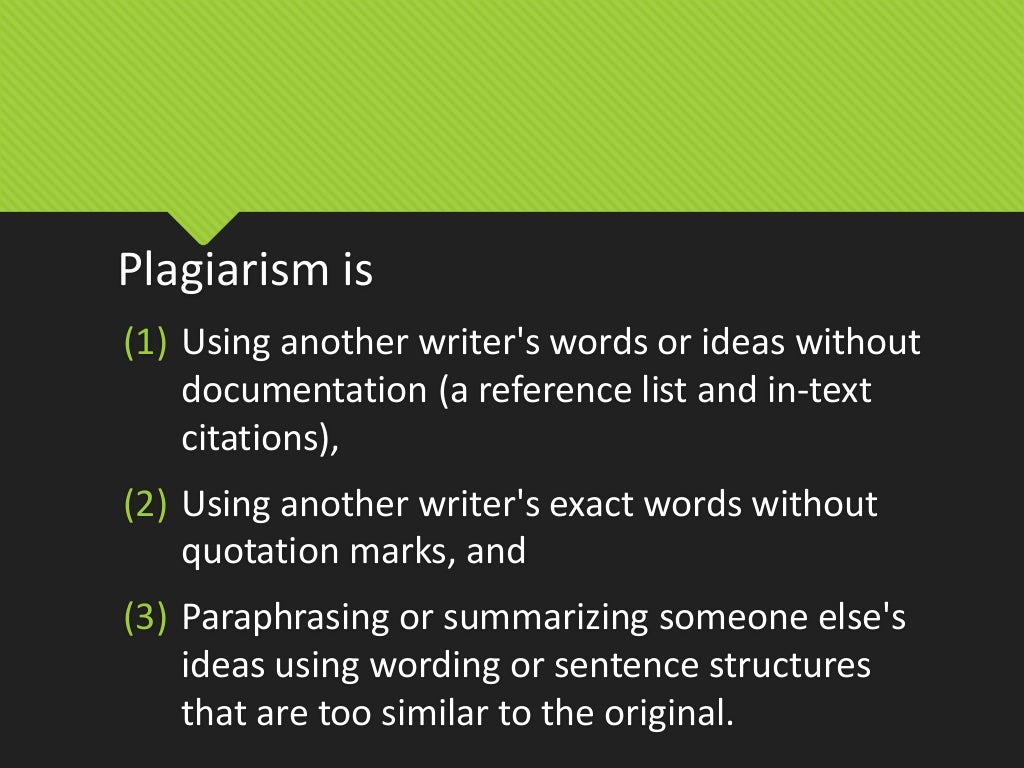
Intentional Plagiarism
Intentional plagiarism often takes the form of activities like purchasing assignments online or having a friend write an assignment for you (or using a friend's old assignment and pretending it's yours). These are the kinds of activities that most students associate with academic dishonesty and plagiarism. In short: it's cheating.
Unintentional Plagiarism
Unintentional plagiarism may be more difficult for students to identify because it is not as blatant as intentional plagiarism. Unintentional plagiarism can take the form of copying and pasting, word change, and remix. See below for examples from the Understanding Plagiarism: Maintaining Academic Honesty PowerPoint presentation by the AUM Learning Center.
 |
 |
from Understanding Plagiarism: Maintaining Academic Honesty,
PowerPoint presentation by the AUM Learning Center

from Understanding Plagiarism:
Maintaining Academic Honesty,
PowerPoint presentation by the AUM Learning Center

from Understanding Plagiarism:
Maintaining Academic Honesty,
PowerPoint presentation by the AUM Learning Center

from Understanding Plagiarism:
Maintaining Academic Honesty,
PowerPoint presentation by the AUM Learning Center

from Understanding Plagiarism:
Maintaining Academic Honesty,
PowerPoint presentation by the AUM Learning Center

from Understanding Plagiarism:
Maintaining Academic Honesty,
PowerPoint presentation by the AUM Learning Center

from Understanding Plagiarism:
Maintaining Academic Honesty,
PowerPoint presentation by the AUM Learning Center